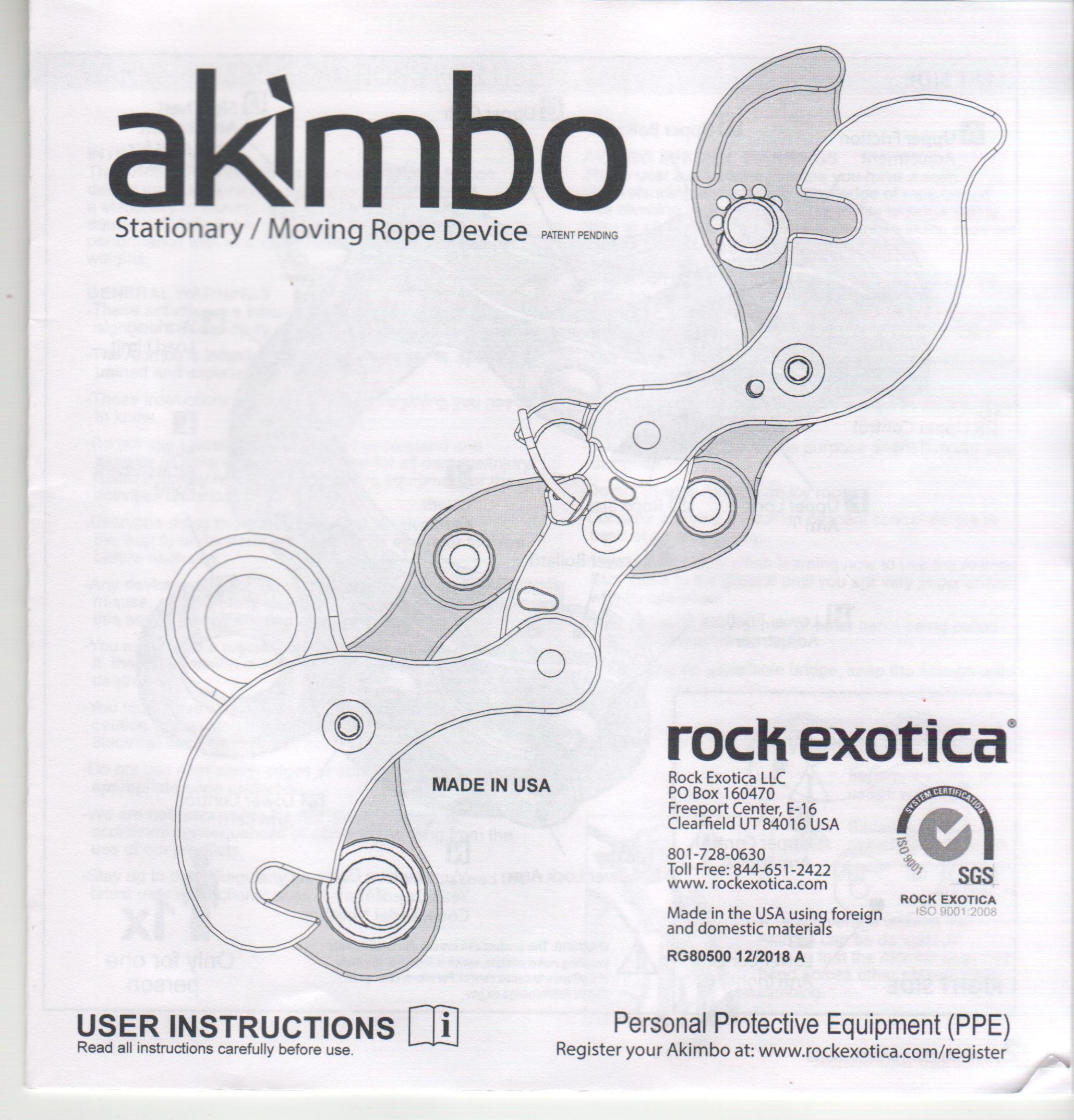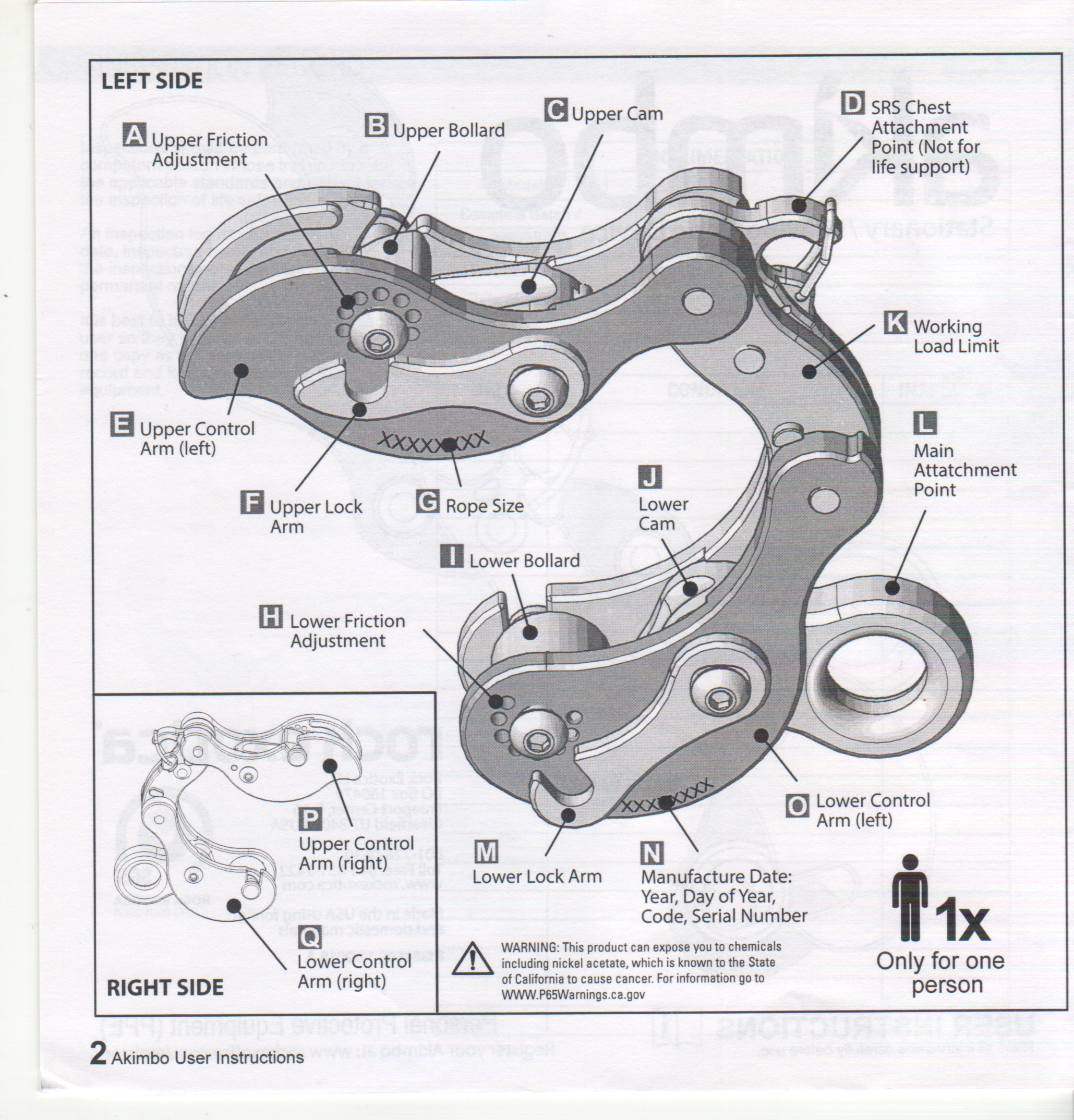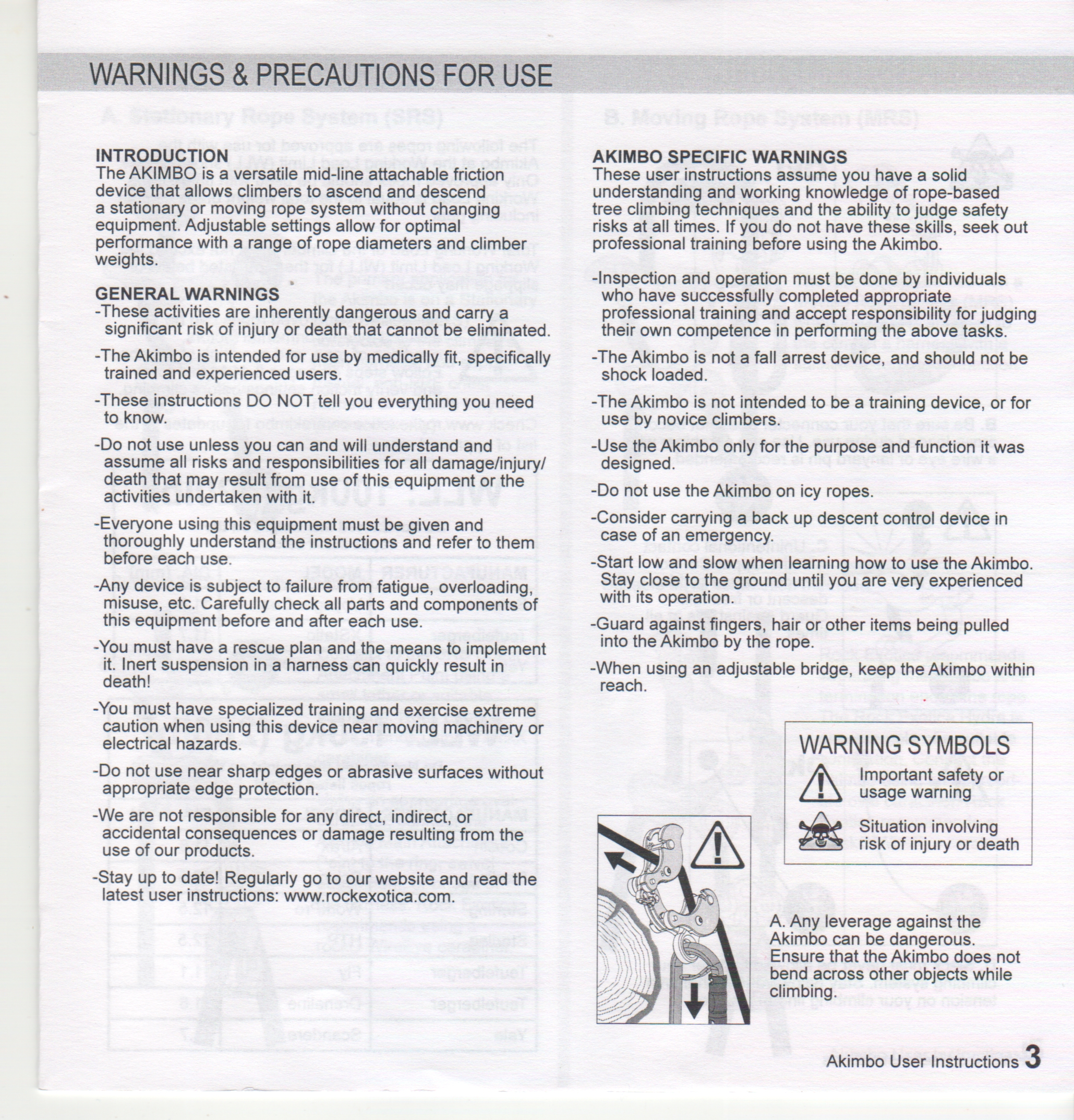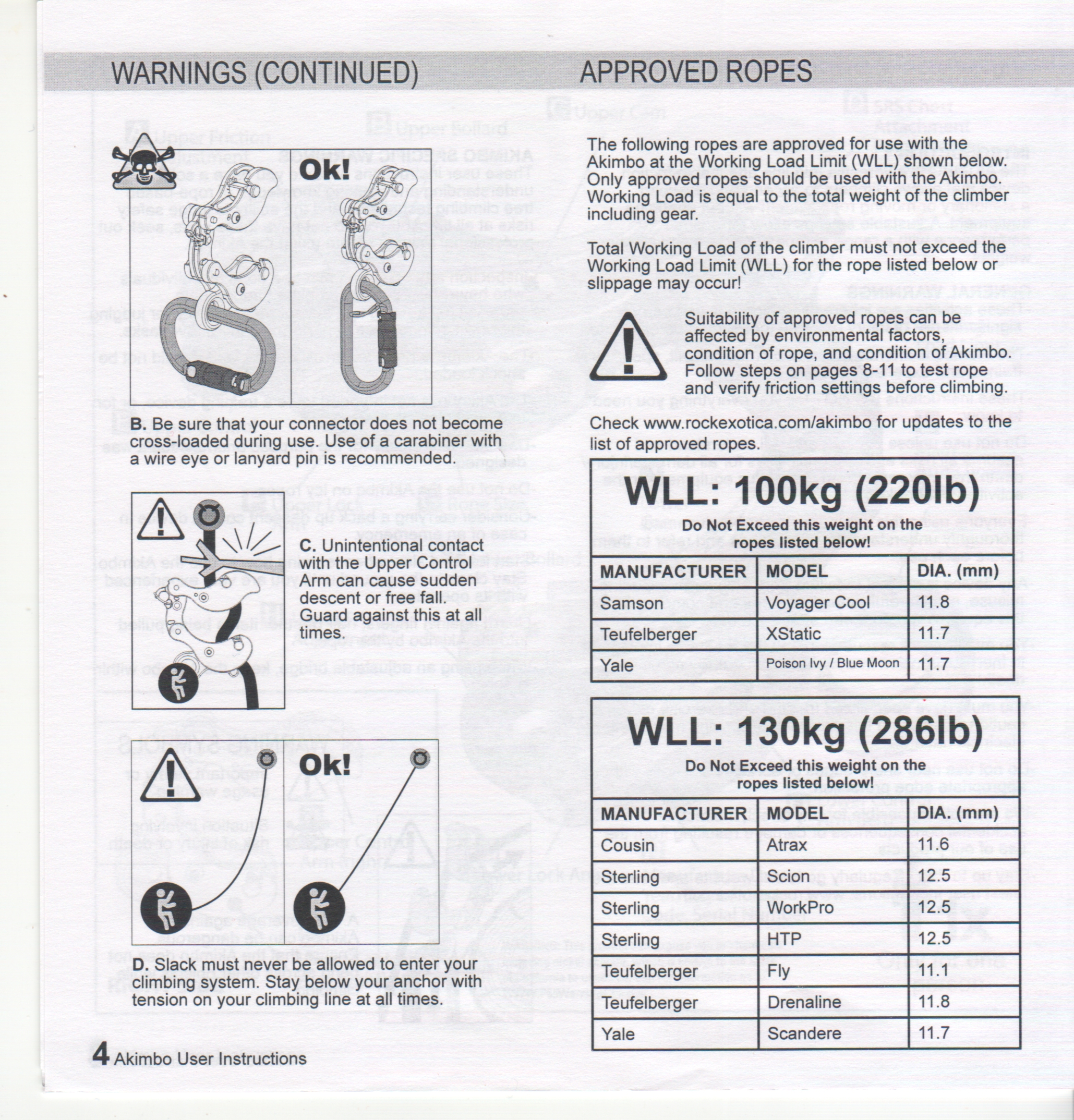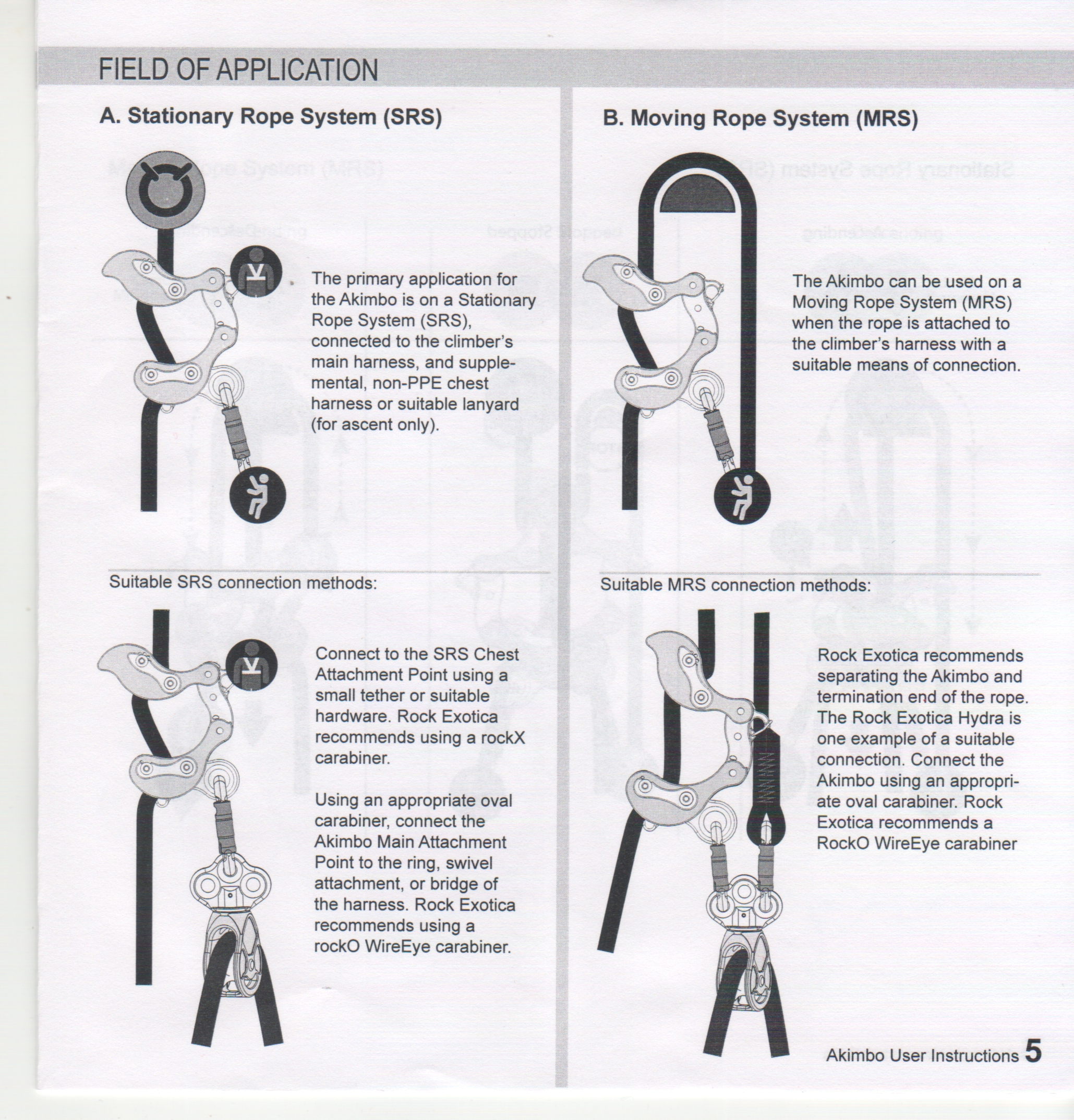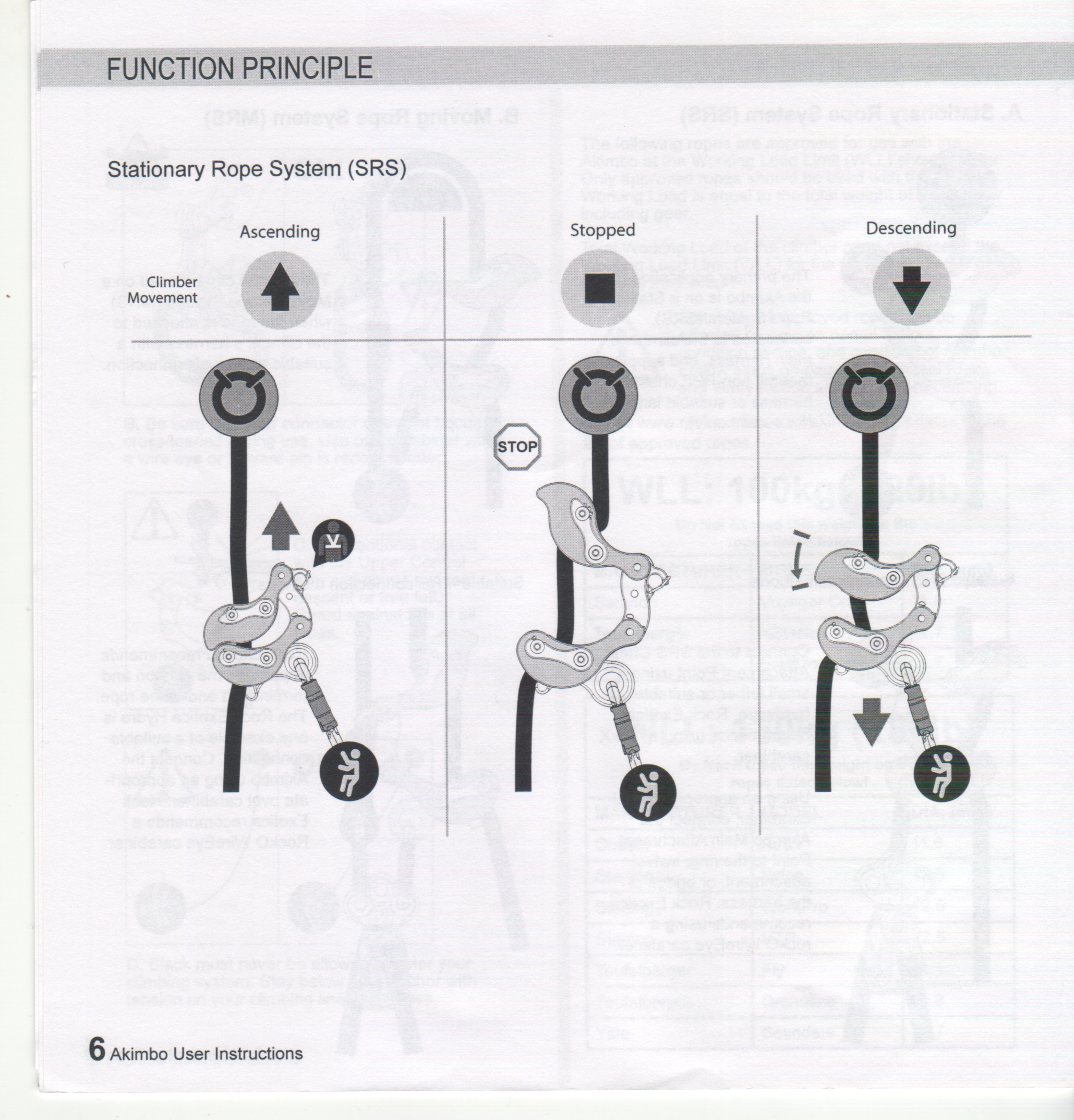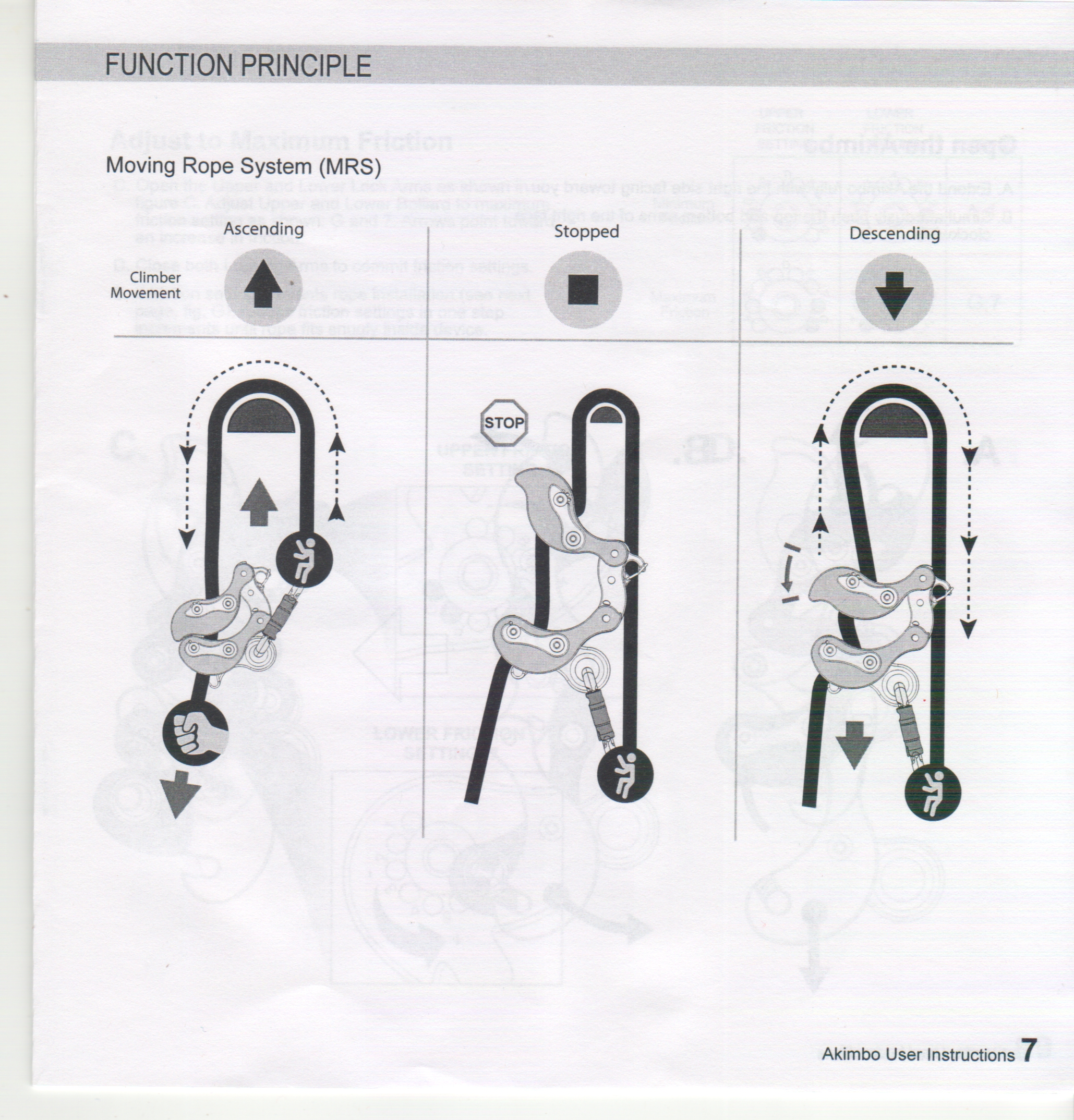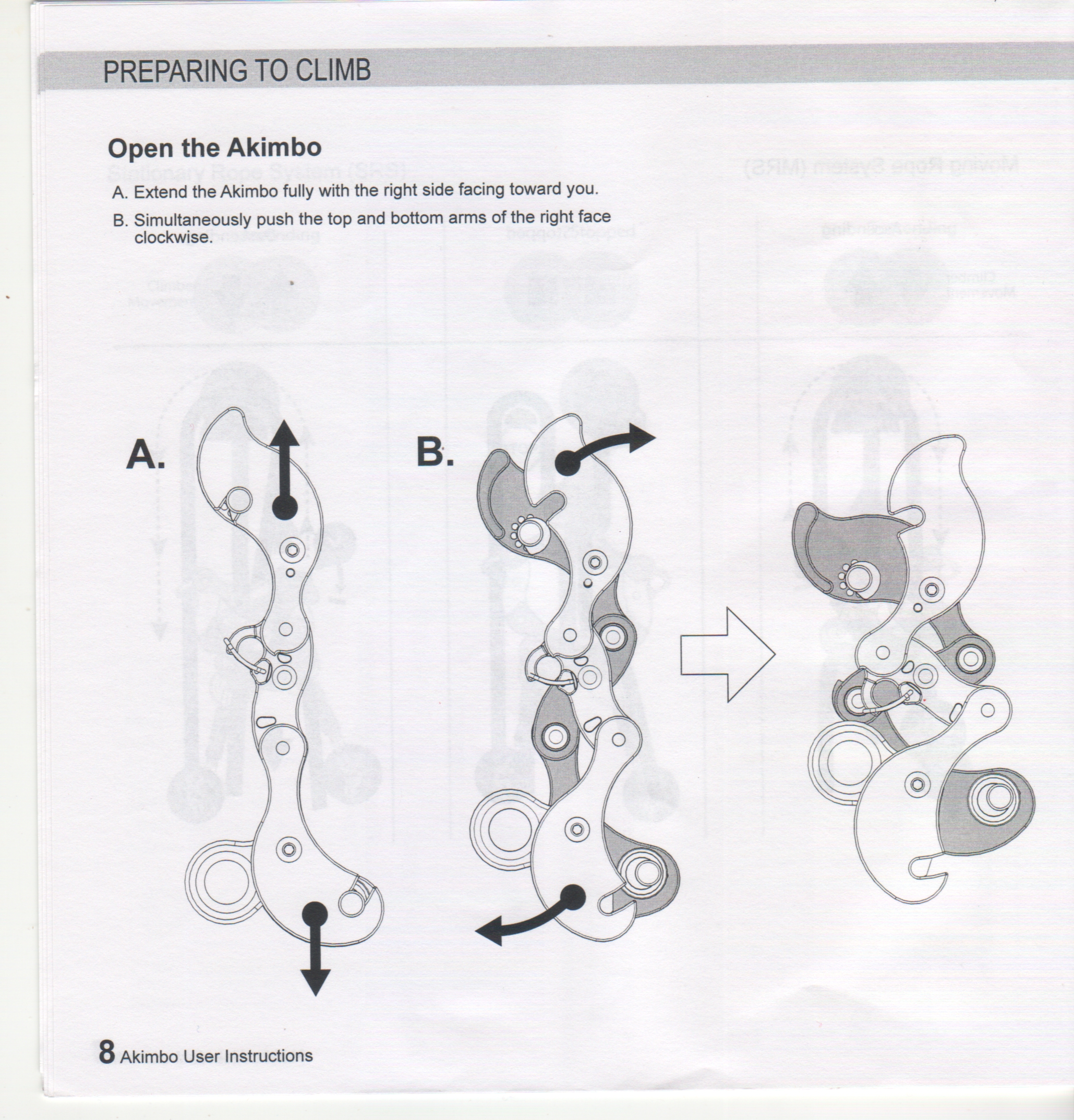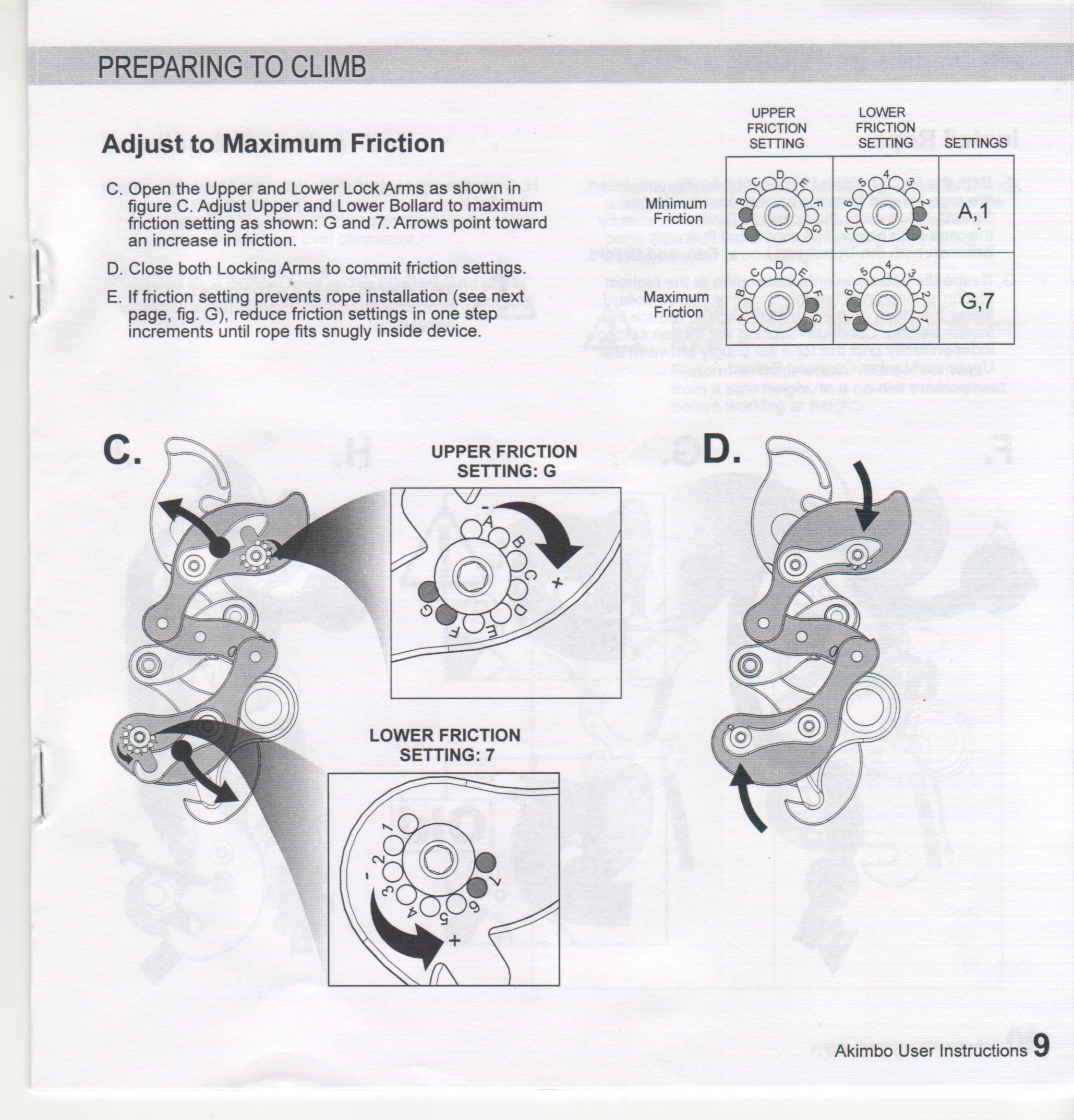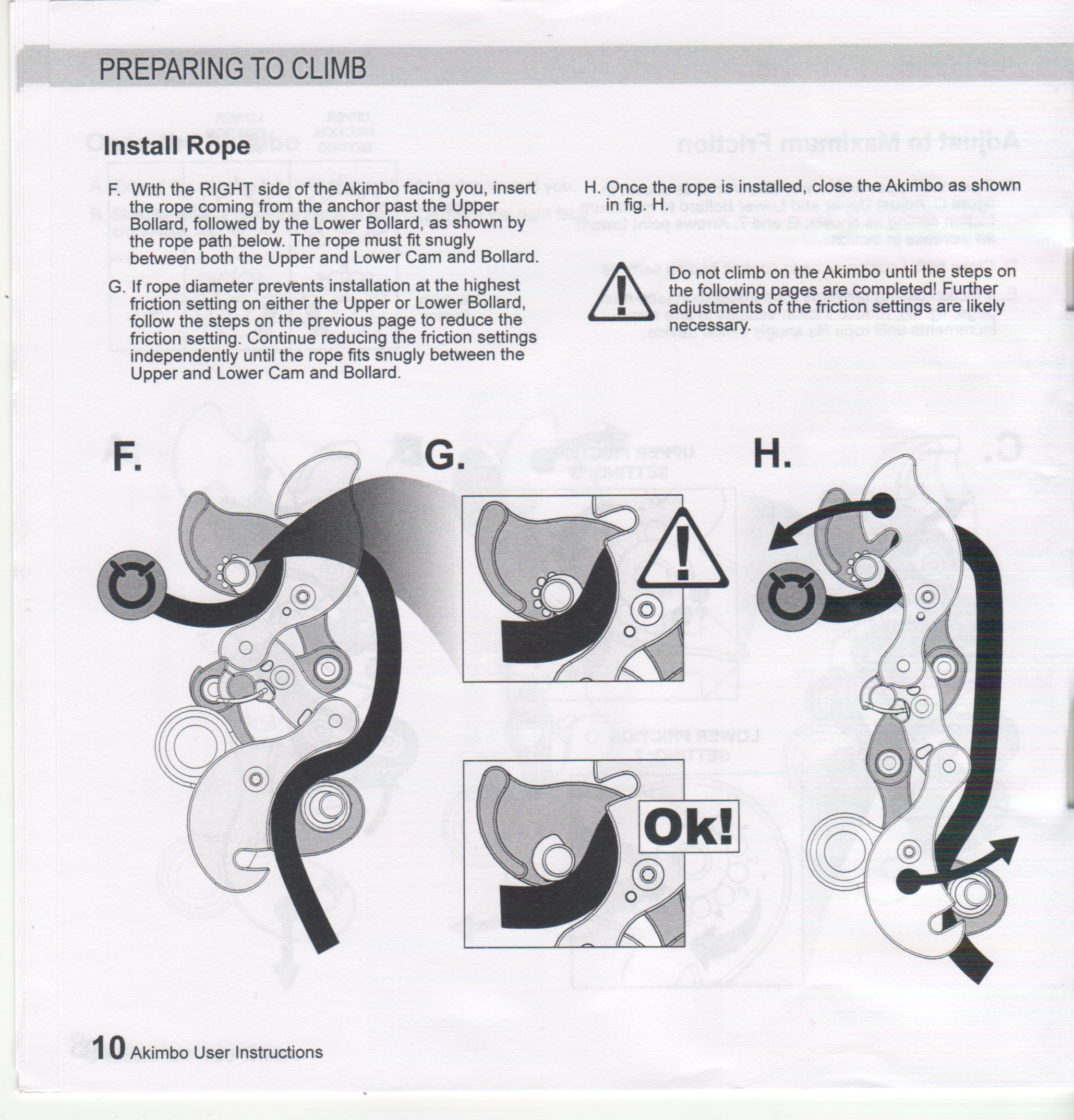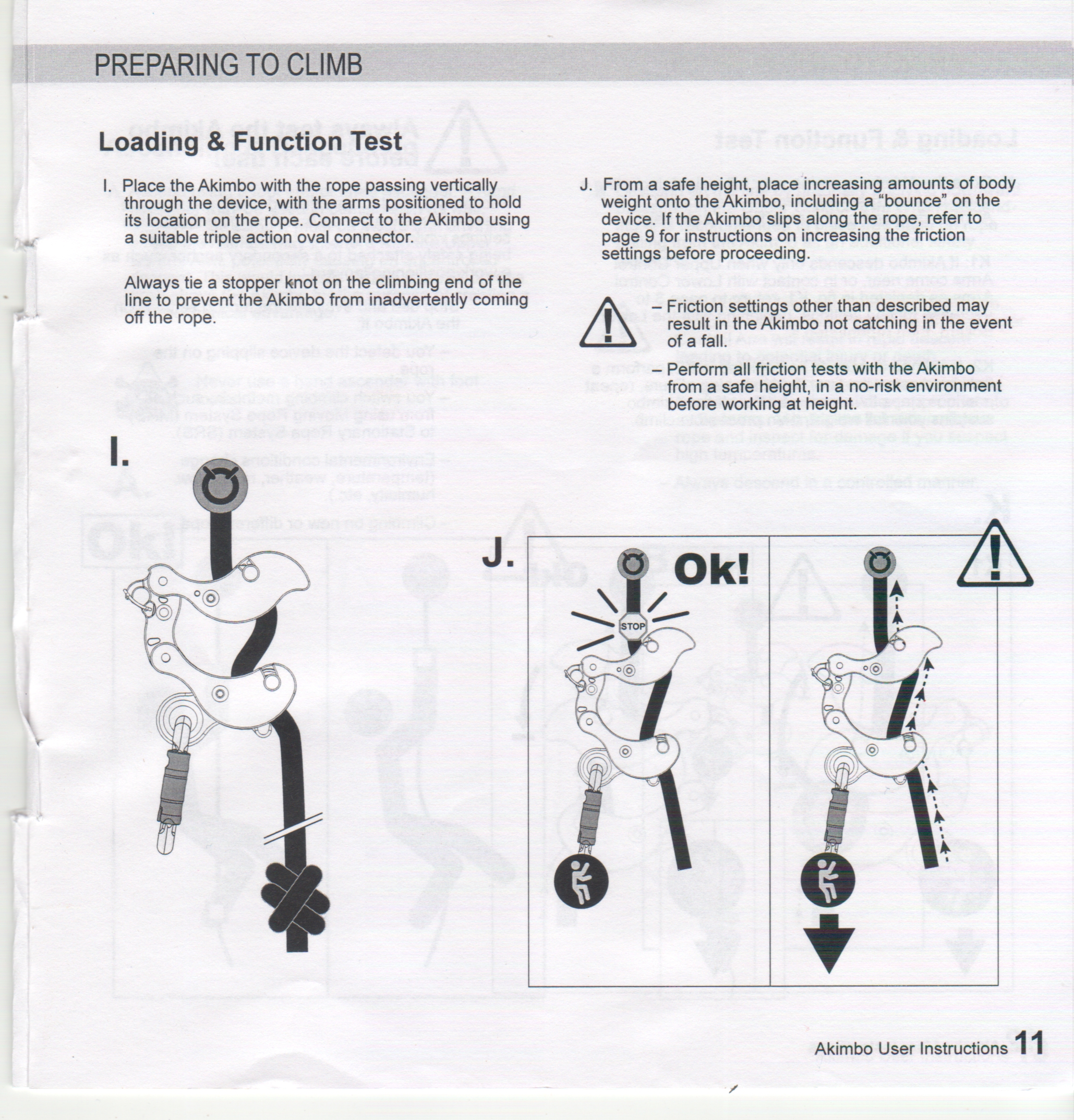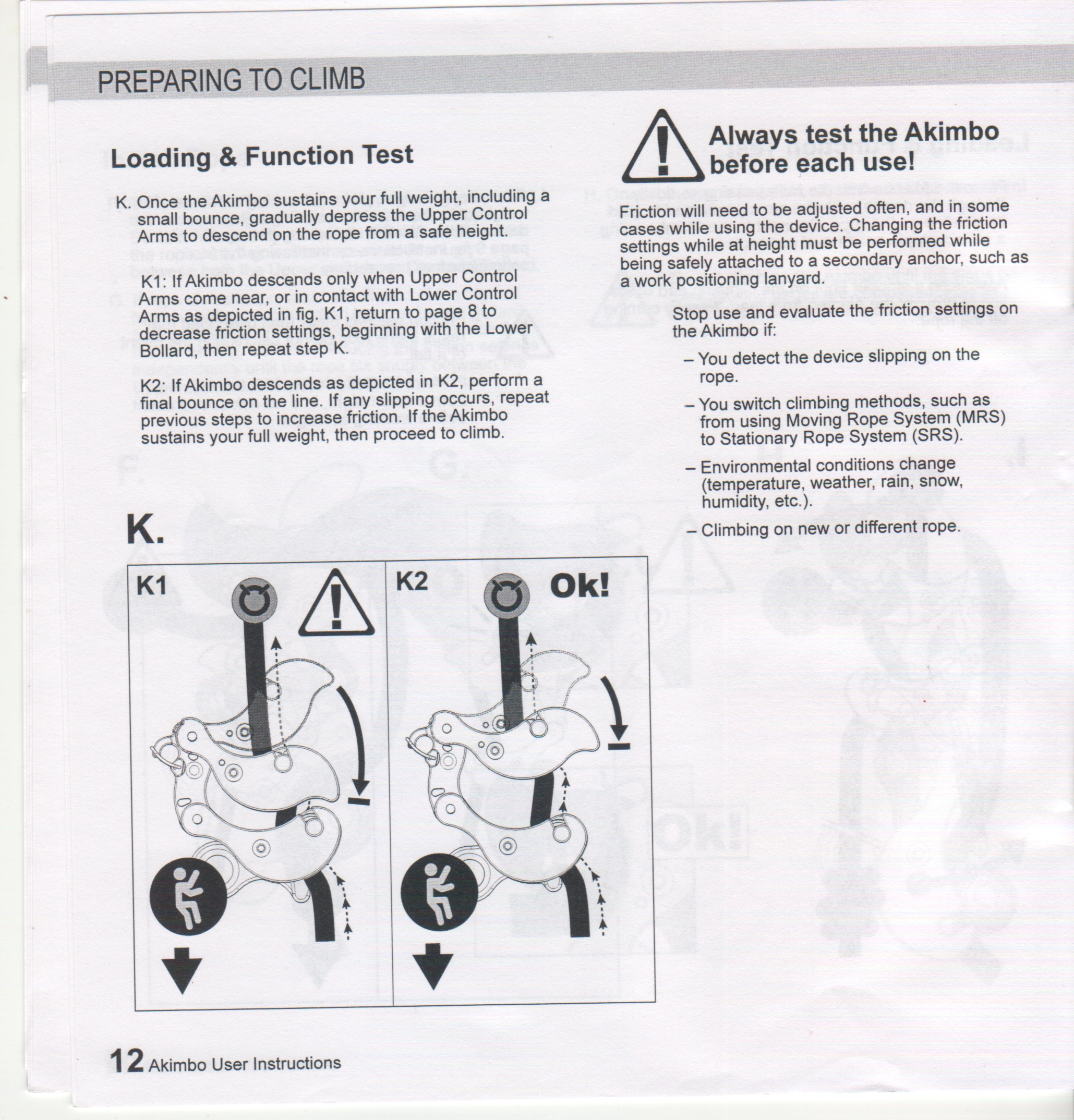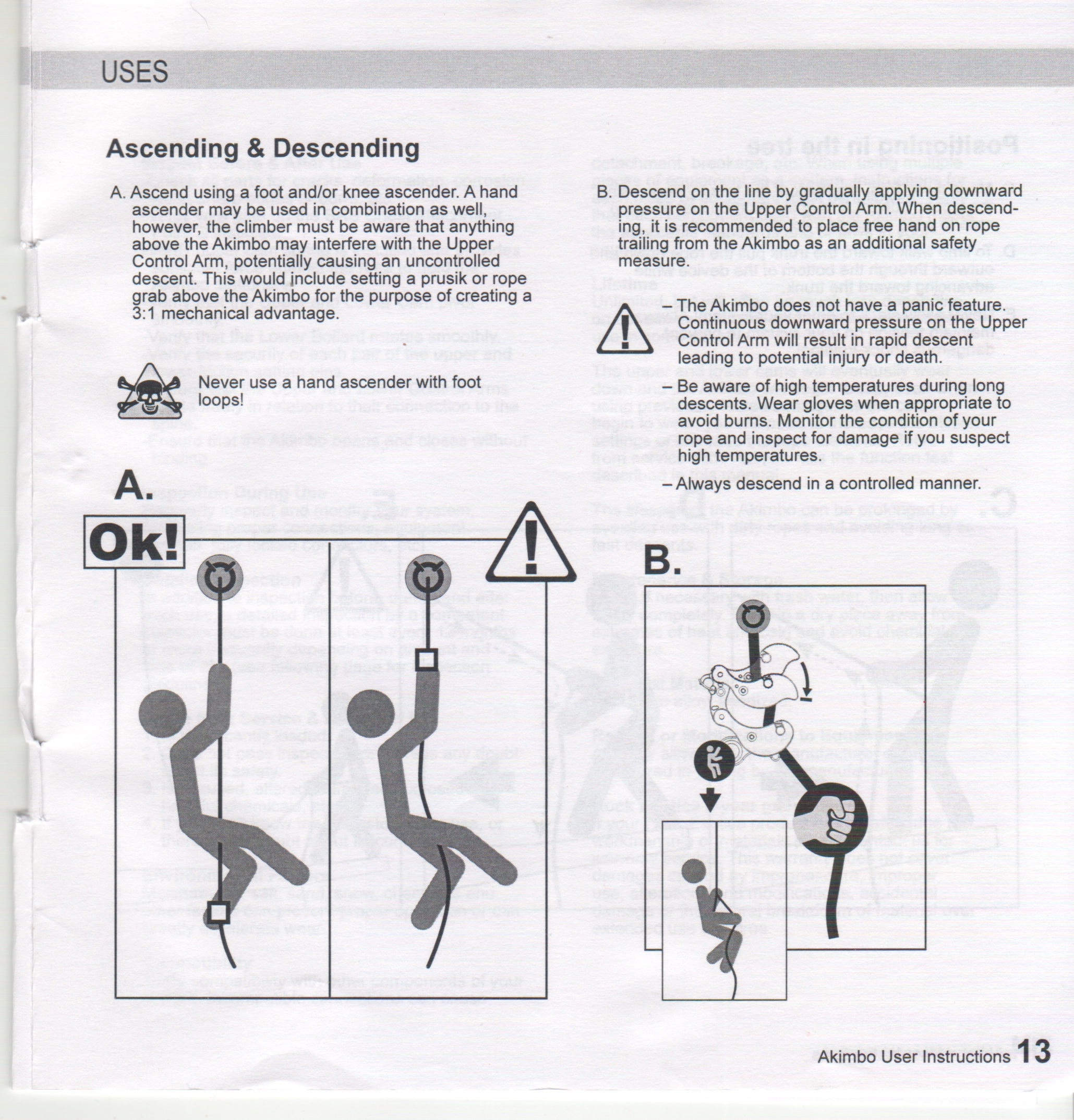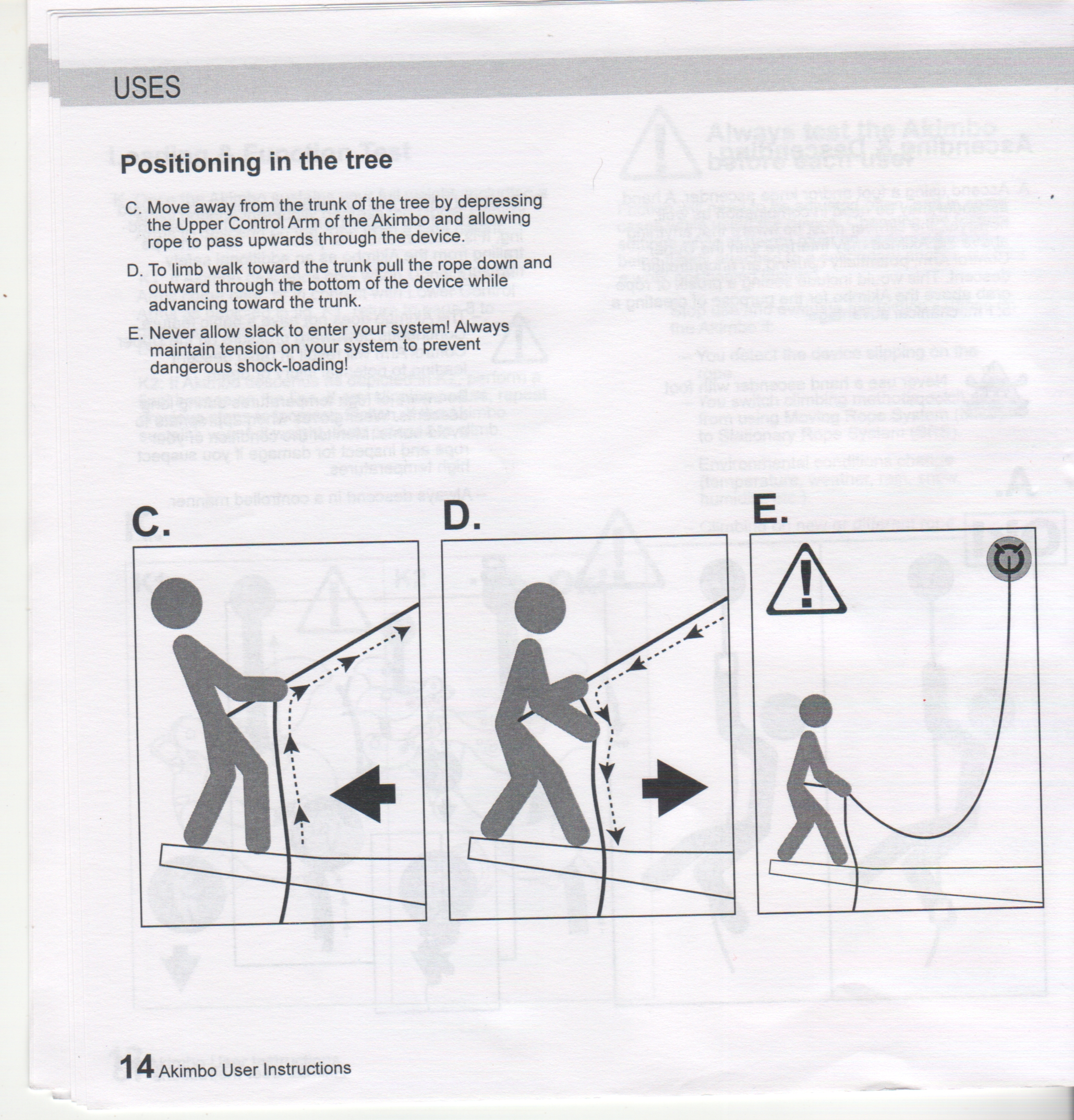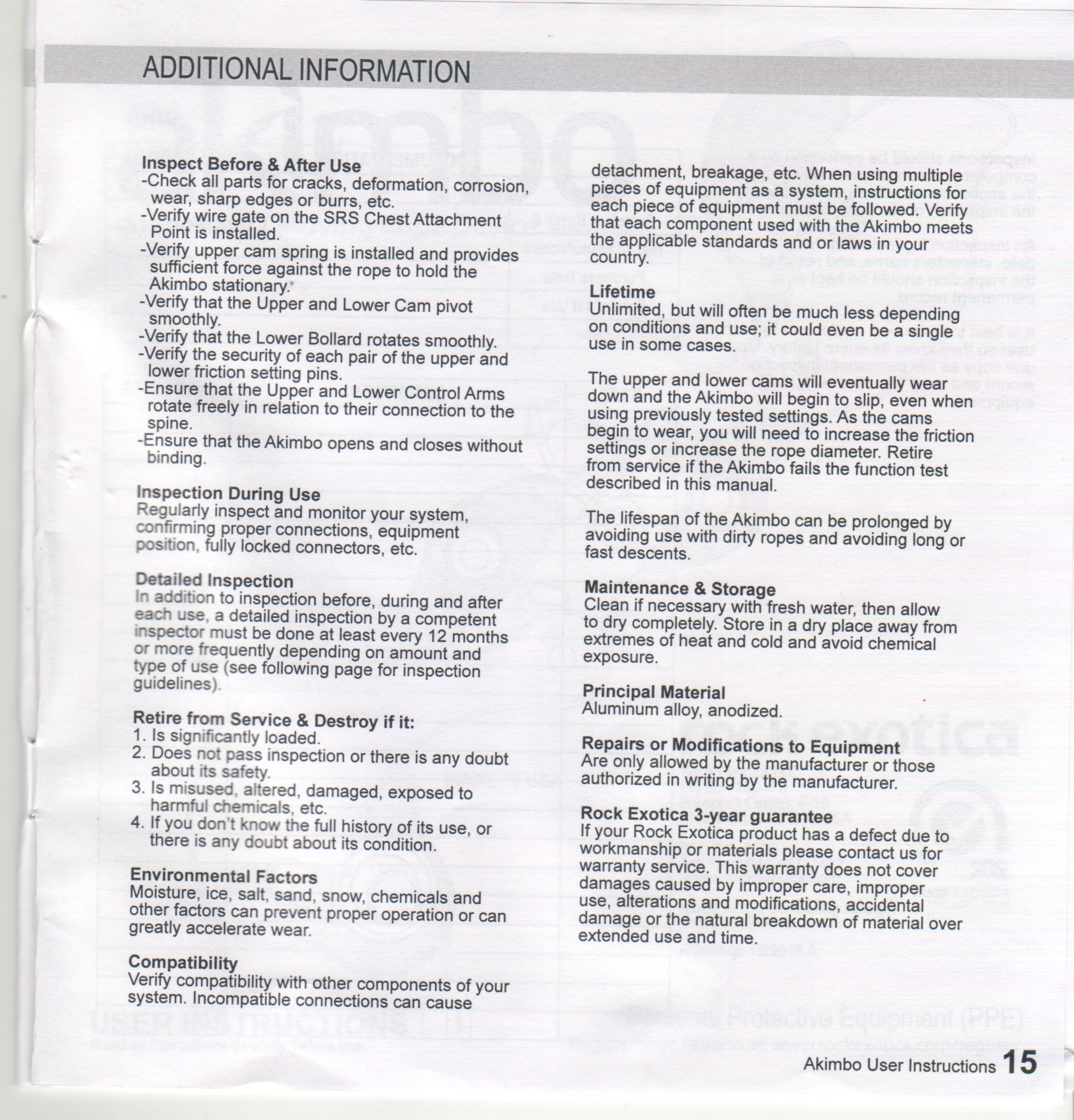Technical Details
I acquired my Rock Exotica Akimbo from Monarch Rope in 2019.
My Rock Exotica Akimbo is 85 mm. tall, 103 mm. wide, 32 mm. thick, and weighs 262 g.
The Akimbo consists of three links connected by rivets. Starting at the top, the three links are as follows:
- Upper Control Arms: The upper control arm consist of two parallel aluminum plates. Each plate is 91 mm. long, 40 mm wide, and 6.3 mm. thick, with inner areas milled to 4.7 mm. The plates are not mirror images of each other. The plates are connected to each other by an axle secured by hex socket machine screws. An upper arm lock sits outside the rear plate and rotates on this axle. A spring-loaded cam with a smooth U-channel face sits between the plates and also rotates on the axle. The cam is 13.1 mm. wide, and the associated rope channel between the plates is 13.5 mm. wide. Distal from the cam is a 12.5 mm. diameter upper bollard. The bollard has 6.1 mm. diameter extensions turned off-center. It is attached to the rear plate with a hex socket machine screw, but can move laterally if the upper arm lock is not closed.With the arm lock open, the bollard can be slid free of the rear plate and turned to one of seven positions, then slid back into the rear plate. Two pins on the bollard engage holes in the rear plate, preventing rotation when locked in position by the locking arm. This provides a means to adjust friction to match the type and diameter of the chosen climbing rope.
- Connecting Links: The connecting links consist of two parallel aluminum links, each 60 mm. long, linked together by a rivet that allows them to pivot scissors-like with respect to each other. The front (gray) link has a chest attachment point with a wire gate. This connection is not for life support. It also has two projections on the front. The upper projection limits how far the upper control arm can extend, while the lower one limits how far the Akimbo can open for rigging. The rear (blue) link has one projection. It interfaces with a stop on the lower read plate to limit how far that plate can extend. Each connecting link plate is attached to its corresponding upper and lower control arms by flat head rivets, with the rivet heads sitting in depressions on the inner surface of the link arm.
- Lower Control Arms: The lower control arms consist of two parallel aluminum plates. These are similar to the upper control arm plates but not identical.Each plate is 91 mm. long, 45 mm wide, and 6.2 mm. thick, with inner areas milled to 4.5 mm. The plates are not mirror images of each other. The plates are connected to each other by an axle secured by hex socket machine screws. An upper arm lock sits outside the rear plate and rotates on this axle. A type-1 lever cam with a smooth U-channel face sits between the plates and also rotates on the axle. The cam is 12.9 mm. wide, and the associated rope channel between the plates is 13.6 mm. wide. Distal from the cam is a 12.5 mm. diameter lower bollard. This bollard and its adjustment capabilities are similar to the upper bollard.
The front upper control arm is printed with "rock exotica" and a curved up-pointing arrow showing the rope path. The rear upper control arm is printed with "19276M0021," a curved arrow labeled "Friction," "1" through "7" labeling the eight friction holes (each friction position uses two adjacent holes), and "Patented." The front connecting link has a half-skull-and-crossbones icon and "EXPERT USE ONLY." The rear connecting link is printed with "WLL 100gg" inside a weight icon, and "see manual for exceptions." The front lower control arm is printed with "akimbo" and a curved down-pointing arrow labeled "ANCHOR," The rear lower control arm is printed with "Made in the USA," 11.5mm≤Ø≤13mm," "See instruction manual for approved ropes," a man icon labeled "1x," a book-with-an-"i" icon, a curved arrow labeled "Friction," and "A" through "G" labeling the eight friction holes.
This is one of the most complicated pieces in my collection. In some ways it reminds me of the Singing Tree Rope Runner or the old Bugat design (Michel Beaupré, Les Bloqueurs en Spéléologie, Spéléo-Québeq v3-4, 1976-77), but it is not a copy of either.
The Akimbo was designed for arborists, and since I don't swing through trees, I'll let them evaluate it for their applications.
For cavers and climbers, the Akimbo is so far from the mainstream of designs that it doesn't fit in with normal caving ascending techniques. I think that it is too complex and not nearly as efficient as a good eccentric cam ascender for our needs. Tarzan has different requirements, and he may find the Akimbo fits his needs. I'm sure that he would find the Akimbo as interesting as I do.

For far more content, use a larger monitor and a full-width window.
Hundreds of cell phone users complained and asked me to for a simpler, mobile friendly site. In particular, they wanted me to limit each page to a small number of pictures and minimize my use of text. This new site provides what they asked for.


